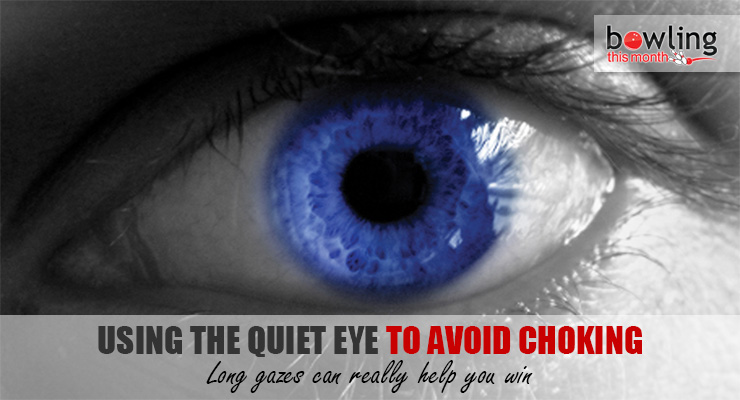Article Contents
- 1. Quiet Eye duration determines success or failure
- 2. Competition stress erodes Quiet Eye duration
- 3. Discussion
- 4. How to implement the Quiet Eye process to avoid choking
- 5. Conclusion
- 6. References
Note: This article is only available to Bowling This Month subscribers.
“Choking can be prevented through the optimal management of [quiet eye] duration as physiological arousal increases to maximum. Our results show that at the outset of [high pressure] competition, there is a tendency to reduce [quiet eye] duration on critical external task information….a key to not choking is to increase the duration of [quiet eye] as physiological levels rise.”
– Vickers & Williams, 2007
In March 2008, I introduced readers to the power and effectiveness of the quiet eye (QE) and the characteristics of elite athlete’s targeting processes. The quiet eye is defined as the length of the gaze time just before the first movement. According to the research, it is increasingly clear that elite athletes take more time on the target and have less eye movement off the target as compared with less proficient athletes.
Intuitively, this might make sense to you. It seems obvious that a skilled athlete will target for a longer period of time with more intent and less eye movement. Less skilled players take less time on the target and have more eye movement. These less skilled athletes perceive that they take more time than they actually do on target lock and that they have a steady gaze on their targets. This perception is not accurate. Fortunately, training can lead to an improvement in quiet eye.
(1) In several studies, training was shown to improve the length of the quiet eye duration leading to significant improvement in performance. In one study of golf putting with highly skilled golfers, improvement in putting success went from approximately 50 percent of putts made to 77 percent of putts made. In an amazing improvement, a collegiate basketball team improved their season-long free throw percentage a staggering 22.6 percent after training, from 54.1 percent completion in year one to 76.7 percent in year two by using the quiet eye.
(2) The powerful effect of the QE on performance is clear. Stress has been shown to erode the quiet eye duration time as ...
Already a premium member? Click here to log in.


